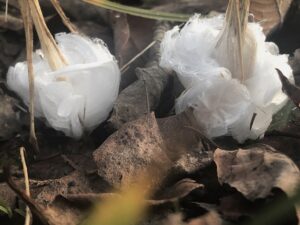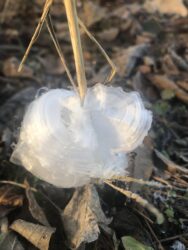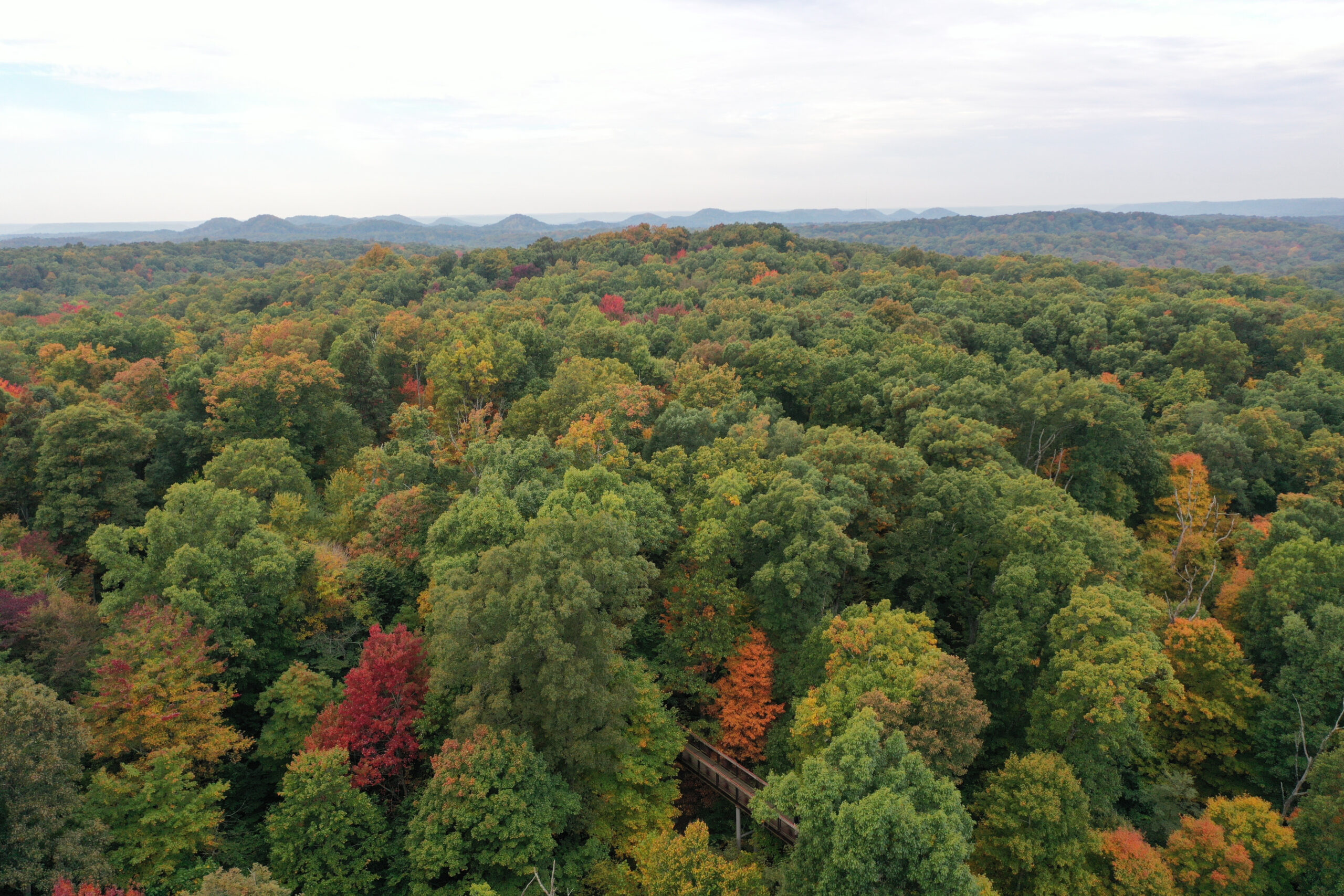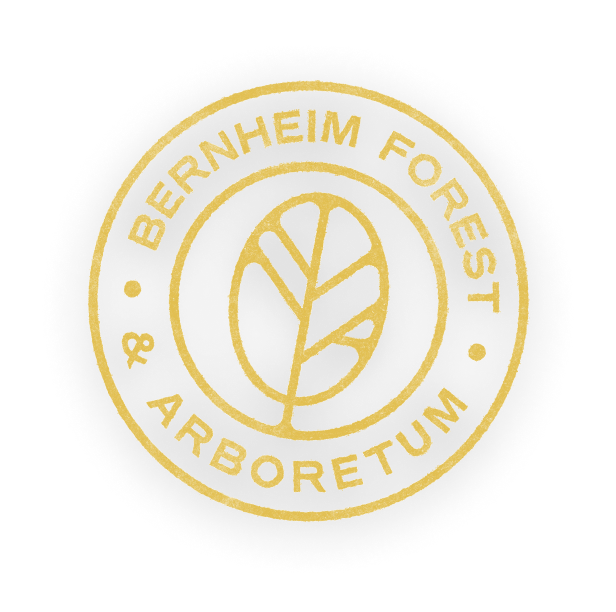 “What are those cotton puff balls, and why are they littered all along the trail?” I ask as my co-worker and I head up the trail behind Bernheim’s Visitor Center. I’m a little taken aback by the fact that someone would litter, and why, of all things cotton balls? She throws a casual glance off the trail, and informs me that my first glimpse has deceived me. They’re not cotton balls, but something far more fascinating— frost flowers. I slow my pace, and assume a crouched observation pose. As I scurry to each of the former “cotton balls,” I realize each is slightly different and unique all to itself. The delicate layers of “petals” are projecting a sparkle enhanced by the glint of the morning sun. Nature has duped me yet again. They are, in fact, beautiful layers of ice extending from the plant stem. I’m in awe! What act of nature has caused these floral ice sculptures?
“What are those cotton puff balls, and why are they littered all along the trail?” I ask as my co-worker and I head up the trail behind Bernheim’s Visitor Center. I’m a little taken aback by the fact that someone would litter, and why, of all things cotton balls? She throws a casual glance off the trail, and informs me that my first glimpse has deceived me. They’re not cotton balls, but something far more fascinating— frost flowers. I slow my pace, and assume a crouched observation pose. As I scurry to each of the former “cotton balls,” I realize each is slightly different and unique all to itself. The delicate layers of “petals” are projecting a sparkle enhanced by the glint of the morning sun. Nature has duped me yet again. They are, in fact, beautiful layers of ice extending from the plant stem. I’m in awe! What act of nature has caused these floral ice sculptures?
I discover Frost Flowers, like real flowers, require just the right conditions to thrive. Early winter and late fall are the optimum time to come across them, and although the air temperature must be freezing, it is vital that the ground is not.
 As the temperature gets to freezing or below, the water and sap in the stem of the plants will expand. As it does, the outer layer of the stem cracks under pressure and very thin fissures begin to form. Water then travels up the plant stem and reaches the tiny cracks. As it does so, it oozes slowly out and freezes, creating the ribbons of ice that form the faux flower petals.
As the temperature gets to freezing or below, the water and sap in the stem of the plants will expand. As it does, the outer layer of the stem cracks under pressure and very thin fissures begin to form. Water then travels up the plant stem and reaches the tiny cracks. As it does so, it oozes slowly out and freezes, creating the ribbons of ice that form the faux flower petals.
Frost flowers are also more common in particular plants with longer stems such as Verbesina alternifolia (yellow ironweed), Cunila origanoides (American dittany), and Helianthemum canadense (Longbranch frostweed). Verbesina virginica (white crownbeard) is a great example here at Bernheim Forest.
Be sure to catch these fleeting beauties in the early mornings, because they will melt away as the sun rises higher in the sky.

